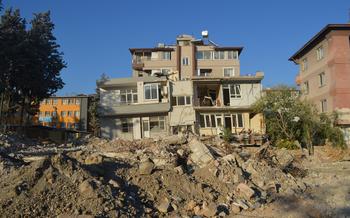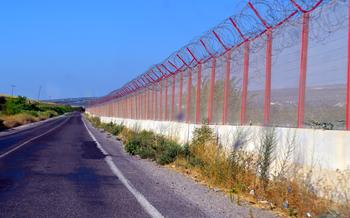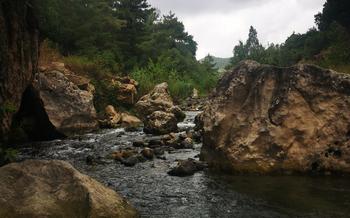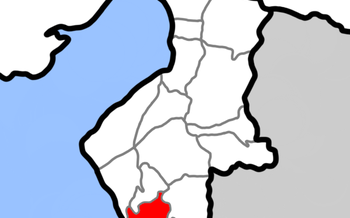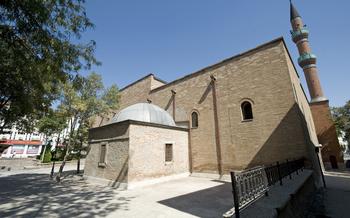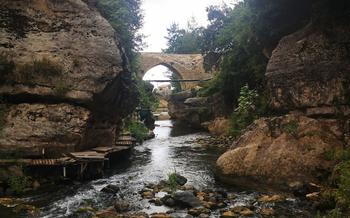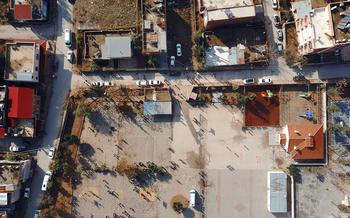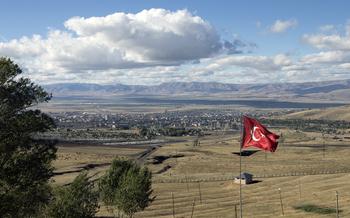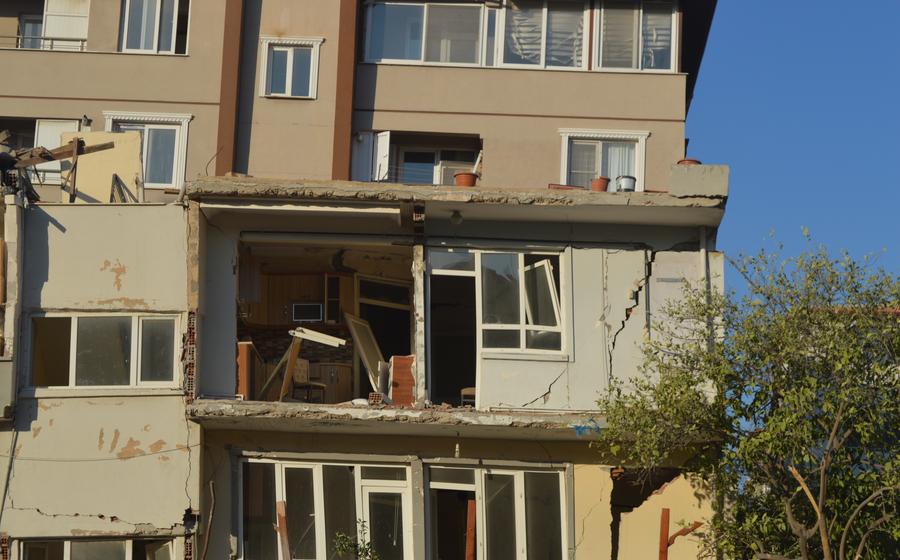
Habib i Nejjar Mosque
- Unveiling History: Discover the Origins and Significance of the Habib i Nejjar Mosque
- A Journey Through Time: Delving into the History of Habib i Nejjar Mosque
- Architectural Masterpiece: Exploring the Design and Features of the Mosque
- A Sacred Site: Unveiling the Religious Significance of the Mosque
- Symbol of Tolerance and Coexistence: Exploring the Mosque's Role in Interfaith Relations
- Embracing Spirituality: Experiencing the Peaceful Atmosphere of the Mosque
- Local Customs and Traditions: Unveiling the Cultural Practices at the Mosque
- Exploring the Neighborhood: Unveiling the Surrounding Area of the Mosque
- Practical Tips for Visitors: Ensuring a Smooth and Rewarding Experience
- Unveiling the Mosque's Hidden Gems: Discovering Lesser-Known Features
- Experiencing Local Festivals and Events: Witnessing the Mosque's Role in Community Celebrations
- Interacting with the Locals: Building Connections and Understanding
- Capturing the Beauty: Photography Tips for Memorable Shots
- Exploring Beyond the Mosque: Unveiling Hatay's Treasures
- Insider Tip: Unveiling a Hidden Gem
Unveiling History: Discover the Origins and Significance of the Habib i Nejjar Mosque
Situated amidst the vibrant city of Hatay, Turkey, the Habib i Nejjar Mosque stands as a testament to centuries of history, faith, and cultural exchange. Its origins are shrouded in mystery, with legends tracing its foundation back to the prophet Yunus (Jonah) himself, who is said to have found refuge on these very grounds. The mosque's architectural features, blending elements of Byzantine and Islamic design, offer a glimpse into its rich past and diverse influences. As a sacred site for Muslims, the Habib i Nejjar Mosque has played a pivotal role in the religious and cultural landscape of Hatay, fostering a spirit of tolerance and coexistence that has defined the region for generations.
A Journey Through Time: Delving into the History of Habib i Nejjar Mosque
The Habib i Nejjar Mosque holds a profound connection to the biblical narrative, as it is believed to be the burial site of the prophet Jonah (Yunus). According to Islamic tradition, Jonah, after surviving the ordeal of being swallowed by a whale, found refuge in Tarsus, where he eventually passed away. The mosque's location is said to be the site of his tomb, making it a sacred destination for pilgrims and believers.
Over the centuries, the mosque has undergone various renovations and additions, reflecting the evolving architectural styles and influences of the region. The original structure, built in the early centuries of Islam, was likely a simple mosque with a prayer hall and a minaret. However, as the city of Tarsus grew in prominence, the mosque was expanded and embellished, incorporating elements of Seljuk and Ottoman architecture.
Today, the mosque stands as a testament to the rich history and cultural heritage of Hatay. Its architectural features, including the intricately carved stonework, the graceful arches, and the soaring minaret, reflect the skill and artistry of past generations. The mosque's interior is equally impressive, with its spacious prayer hall adorned with beautiful carpets, chandeliers, and Qur'anic inscriptions.
Visiting the Habib i Nejjar Mosque is a journey through time, allowing visitors to explore the layers of history that have shaped this sacred site.
Architectural Masterpiece: Exploring the Design and Features of the Mosque
The Habib i Nejjar Mosque stands as a testament to the harmonious blend of architectural styles, showcasing elements from different eras and cultures. The mosque's unique fusion of Byzantine, Islamic, and Ottoman influences creates a visually stunning and architecturally significant structure.
Unique Blend:
The mosque's exterior facade exemplifies the fusion of Byzantine and Islamic architecture. Its sturdy stone walls, arched windows, and intricate carvings evoke a sense of grandeur and history. The interior, on the other hand, showcases Ottoman influences with its spacious prayer hall adorned with colorful tiles, intricate calligraphy, and elegant chandeliers.
Symbolism in Design:
The mosque's design incorporates various symbolic elements that hold deep religious and cultural significance. The octagonal shape of the dome, for instance, represents the eight gates of paradise, while the minaret's spiral staircase symbolizes the journey towards spiritual enlightenment.
Prayer Hall:
The heart of the mosque lies in its spacious prayer hall, which can accommodate a large congregation. The hall is adorned with intricate tilework, Quranic verses, and elegant chandeliers, creating an atmosphere of serenity and devotion. The mihrab, or prayer niche, is adorned with intricate carvings and serves as the focal point of the prayer hall.
Minaret and Courtyard:
The mosque's minaret, a tall and slender tower, rises prominently from the courtyard, symbolizing the call to prayer and the connection between heaven and earth. The courtyard, surrounded by arched walkways and lush gardens, provides a tranquil space for contemplation and relaxation.
A Sacred Site: Unveiling the Religious Significance of the Mosque
The Habib i Nejjar Mosque stands as a sacred site, deeply embedded in the religious landscape of Hatay. Its primary function remains as a place of worship for Muslims, where they gather to offer prayers five times a day and during special religious occasions. The mosque's spacious prayer hall, adorned with intricate decorations, provides a serene and conducive environment for spiritual devotion.
Beyond its role as a place of worship, the mosque also houses revered relics associated with prophets and saints, attracting pilgrims from far and wide. These holy relics, believed to possess spiritual significance, draw devotees seeking blessings, guidance, and a deeper connection with their faith. The mosque's status as a pilgrimage site further enhances its religious importance, making it a focal point for spiritual journeys and religious observances.
Additionally, the mosque serves as a center of Islamic learning and scholarship. It hosts religious classes, lectures, and discussions, fostering a deeper understanding of Islamic teachings and traditions. Renowned scholars and religious leaders often grace the mosque with their presence, engaging in intellectual discourse and guiding the spiritual development of the community. This aspect further solidifies the mosque's position as a hub of religious knowledge and enlightenment.
Symbol of Tolerance and Coexistence: Exploring the Mosque's Role in Interfaith Relations
The Habib i Nejjar Mosque stands as a testament to the rich history of tolerance and coexistence in Hatay. Throughout the centuries, the mosque has served as a place of worship and a symbol of unity for people of diverse faiths.
The surrounding area of the mosque has historically been home to a diverse community of Muslims, Christians, and Jews, who have lived together in relative harmony. This diversity is reflected in the mosque's architecture and design, which incorporates elements from different religious traditions.
The mosque's history is marked by instances of shared spaces and interfaith dialogue. In the past, the mosque's courtyard was used for religious ceremonies and festivals by both Muslims and Christians. Furthermore, the mosque has been a venue for interfaith dialogues and discussions, fostering understanding and respect among different religious communities.
Today, the mosque continues to serve as a symbol of harmony and coexistence in Hatay. It is a place where people of different faiths come together to pray, learn, and celebrate their shared heritage. The mosque's enduring legacy as a symbol of tolerance and acceptance serves as an inspiration for people around the world.
Embracing Spirituality: Experiencing the Peaceful Atmosphere of the Mosque
Within the hallowed walls of the Habib i Nejjar Mosque, a palpable sense of tranquility envelops visitors, inviting them to connect with the divine. The mosque's serene ambiance provides a sanctuary for reflection and contemplation, allowing individuals to escape the bustling world outside and immerse themselves in a spiritual journey. The intricate designs and harmonious architecture create a sacred space conducive to mindfulness and meditation practices, fostering a deep sense of connection with the divine.
As the sun's rays filter through the stained-glass windows, casting a warm glow upon the intricate mosaic tiles, visitors are enveloped in a mystical atmosphere. The rhythmic chanting of prayers echoes through the prayer hall, creating a mesmerizing symphony that transports the soul to a higher realm. The mosque's serene atmosphere encourages visitors to slow down, quiet their minds, and immerse themselves in the present moment, facilitating a profound spiritual connection.
Local Customs and Traditions: Unveiling the Cultural Practices at the Mosque
Visiting the Habib i Nejjar Mosque offers a glimpse into the local customs and traditions that have shaped the cultural fabric of Hatay. Observing these practices provides a deeper understanding of the region's rich heritage and the daily lives of its people.
Dress Code: When entering the mosque, visitors are expected to dress modestly and respectfully. This includes covering shoulders, knees, and avoiding revealing clothing. For women, it is customary to cover their heads with a headscarf.
Rituals and Customs: The mosque is a place where Muslims come together to perform various rituals and customs. These include daily prayers, which are held five times a day, as well as special prayers during religious festivals and celebrations. Visitors may witness these rituals, which offer insights into the religious practices of the local community.
Local Traditions: The mosque serves as a hub for preserving and showcasing local traditions. Visitors may encounter traditional ceremonies, music, and dance performances held on the mosque grounds. These events provide a vibrant display of Hatay's cultural heritage and offer visitors a chance to experience the region's rich traditions firsthand.
Community Gatherings: The mosque is also a place where the local community comes together for social gatherings and events. These gatherings often include discussions, workshops, and celebrations, fostering a sense of unity and belonging among the community members. Visitors may have the opportunity to witness or even participate in these events, which offer a glimpse into the social fabric of Hatay.
Exploring the Neighborhood: Unveiling the Surrounding Area of the Mosque
Venturing beyond the mosque's sacred grounds, visitors can immerse themselves in the vibrant tapestry of the surrounding neighborhood. A labyrinth of bustling markets and bazaars invites exploration, where vendors display an array of colorful textiles, aromatic spices, and handcrafted souvenirs. The air buzzes with the sounds of haggling, laughter, and the clinking of tea glasses in nearby cafes.
For those seeking culinary delights, the neighborhood offers a tantalizing array of restaurants and cafes, each serving up mouthwatering local delicacies. From freshly grilled kebabs to savory mezzes and sweet pastries, the flavors of Hatay are sure to tantalize the taste buds.
History buffs will find much to explore in the vicinity of the mosque. Numerous historical sites and landmarks dot the neighborhood, offering a glimpse into the region's rich past. From ancient ruins and medieval fortifications to grand mansions and historic churches, each site tells a unique story of Hatay's diverse heritage.
Transportation in the area is convenient, with the mosque situated near several public transportation hubs. Visitors can easily hop on a bus or tram to explore other parts of the city or venture further afield to discover the natural wonders and cultural treasures that Hatay has to offer.
Practical Tips for Visitors: Ensuring a Smooth and Rewarding Experience
When planning your visit to the Habib i Nejjar Mosque, it's essential to consider a few practical tips to ensure a smooth and rewarding experience:
-
Visiting Hours: Confirm the mosque's visiting hours and prayer schedules in advance. The mosque is generally open to visitors outside of prayer times, but it's advisable to avoid visiting during the main prayer times (Fajr, Dhuhr, Asr, Maghrib, and Isha) to minimize disruption.
-
Dress Code: Respectful attire is expected when visiting the mosque. For men, it's advisable to wear long pants and a collared shirt. For women, modest clothing that covers the shoulders and knees is appropriate. Headscarves are not mandatory for non-Muslim visitors but are recommended as a sign of respect.
-
Photography Etiquette: While photography is generally permitted within the mosque, it's essential to be respectful and mindful of other visitors and worshippers. Avoid using flash photography, as it can be disruptive during prayers. It's also important to refrain from taking photographs of individuals without their consent.
-
Respectful Behavior: Remember that the mosque is a sacred place for Muslims, so it's crucial to behave respectfully and observe local customs. Avoid loud conversations, refrain from touching or pointing at religious objects, and maintain a generally respectful demeanor.
Unveiling the Mosque's Hidden Gems: Discovering Lesser-Known Features
Beyond its historical significance and architectural beauty, the Habib i Nejjar Mosque holds several hidden gems that add to its allure. One such gem is the secret chamber located beneath the mosque. This chamber is said to have been used for religious ceremonies and rituals in ancient times, and it offers a glimpse into the mosque's rich past.
The mosque also boasts mystical symbolism, with hidden symbols and motifs adorning its walls and ceilings. These symbols hold deep religious and cultural significance, and visitors can spend hours trying to decipher their meanings. Additionally, the mosque houses rare and unique artifacts, including ancient manuscripts, religious relics, and intricate works of art.
Local legends and stories add to the mystique of the Habib i Nejjar Mosque. One popular legend tells the tale of a hidden treasure buried beneath the mosque, waiting to be discovered by a worthy individual. These stories and legends have been passed down through generations, capturing the imagination of locals and visitors alike.
Experiencing Local Festivals and Events: Witnessing the Mosque's Role in Community Celebrations
The Habib i Nejjar Mosque is not just a place of worship; it is also a vibrant hub for community celebrations and events. Throughout the year, the mosque plays host to a variety of religious festivals, cultural events, and community fairs, offering visitors a unique opportunity to witness the rich traditions and customs of Hatay.
One of the most significant events held at the mosque is the annual Prophet Jonah (Yunus) Festival. This three-day festival commemorates the prophet's life and teachings and attracts thousands of pilgrims from all over the region. During the festival, the mosque is decorated with colorful lights and banners, and special prayers and ceremonies are held. Visitors can also enjoy traditional music, dance performances, and a lively bazaar selling local handicrafts and delicacies.
Other notable events held at the mosque include the Mevlid-i Nebi, which celebrates the birth of the Prophet Muhammad, and the Laylat al-Qadr, which marks the night when the Quran was first revealed to the Prophet. These events are characterized by special prayers, recitations, and communal meals, providing visitors with an immersive experience of Islamic culture and traditions.
In addition to religious festivals, the mosque also hosts various cultural events and community fairs throughout the year. These events showcase the diverse talents and traditions of the local community, with performances by musicians, dancers, and poets, as well as exhibitions of local art and handicrafts. Visitors can also enjoy traditional Turkish cuisine and mingle with the friendly locals, creating a warm and welcoming atmosphere.
Attending local festivals and events at the Habib i Nejjar Mosque is a fantastic way to immerse oneself in the vibrant culture of Hatay and experience the mosque's role as a center of community life. Whether it's the lively atmosphere of the Prophet Jonah Festival or the serene spirituality of the Mevlid-i Nebi, these events offer visitors a unique and unforgettable glimpse into the heart of Islamic tradition and culture.
Interacting with the Locals: Building Connections and Understanding
One of the most enriching experiences when visiting any destination is interacting with the locals and gaining insights into their culture and traditions. At the Habib i Nejjar Mosque, you'll have ample opportunities to connect with the friendly and welcoming community.
Strike up conversations with the locals, whether it's at a nearby café or during a guided tour. Ask questions about their daily lives, their customs, and their perspectives on the mosque and its significance. You'll be amazed by the warmth and hospitality you'll encounter.
To enhance your interactions, it's helpful to learn a few basic Turkish phrases. Greetings like "Merhaba" (hello) and "Teşekkür ederim" (thank you) go a long way in showing respect and appreciation. Locals will be impressed by your effort and more likely to engage in conversation.
It's essential to be mindful of local etiquette and customs to ensure respectful interactions. For example, in Turkey, it's considered polite to remove your shoes before entering a mosque or someone's home. Understanding these cultural nuances will help you navigate the local culture with ease.
By engaging with the locals, you'll not only gain a deeper understanding of the mosque and its significance but also build meaningful connections and foster cultural exchange. Embrace the opportunity to interact with the community and create lasting memories of your time at the Habib i Nejjar Mosque.
Capturing the Beauty: Photography Tips for Memorable Shots
Ideal Lighting: The golden hours, just after sunrise and before sunset, offer the most flattering light for photography. This warm, diffused light illuminates the mosque's intricate details and creates a magical atmosphere.
Composition Techniques: Mastering the art of composition is essential for creating visually appealing photographs. Experiment with different angles, perspectives, and focal points to capture the mosque's grandeur and unique features.
Architectural Details: Focus on the mosque's distinctive architectural elements, such as its intricate carvings, colorful tiles, and graceful arches. These details add depth and character to your photographs.
Capturing the Essence: To truly capture the essence of the Habib i Nejjar Mosque, take your time to observe and feel the atmosphere. Pay attention to the play of light and shadow, the movement of people, and the overall ambiance of the mosque.
Exploring Beyond the Mosque: Unveiling Hatay's Treasures
Ancient Ruins: Venture beyond the mosque to explore the ancient ruins and archaeological sites that dot the landscape of Hatay. Discover the remnants of ancient civilizations, including the impressive ruins of the Roman city of Antioch, once a thriving metropolis and the capital of the Roman province of Syria.
Natural Wonders: Embrace the stunning natural beauty of Hatay, renowned for its picturesque landscapes and pristine beaches. Explore the lush green forests of the Amanos Mountains, hike along the scenic trails, and marvel at the cascading waterfalls. Bask in the sun on the golden shores of the Mediterranean Sea, where you can swim, sunbathe, and enjoy water sports.
Culinary Delights: Indulge in the diverse culinary offerings of Hatay, a region renowned for its rich cuisine. Savor the flavors of traditional dishes such as "kunefe," a sweet pastry filled with cheese and pistachios, and "hummus," a creamy chickpea dip. Explore the vibrant local markets, where you can find an array of fresh produce, spices, and delicacies.
Cultural Heritage: Immerse yourself in Hatay's rich cultural heritage through its museums and cultural events. Visit the Hatay Archaeology Museum to learn about the region's ancient past and admire artifacts from various civilizations. Attend traditional performances, such as folk dances and music concerts, to experience the vibrant cultural expressions of the local community.
Insider Tip: Unveiling a Hidden Gem
As you explore the Habib i Nejjar Mosque, don't miss the hidden garden nestled within the mosque complex. This tranquil oasis offers a serene escape from the bustling city. Stroll through the lush greenery, admire the vibrant flowers, and find a peaceful spot to relax and reflect.
For a truly authentic Hatay culinary experience, venture outside the mosque and try the traditional sweet pastry known as "kunefe" at a nearby shop. This delicious dessert, made with shredded dough, cheese, and syrup, is a local favorite and a must-try for any visitor to Hatay.
